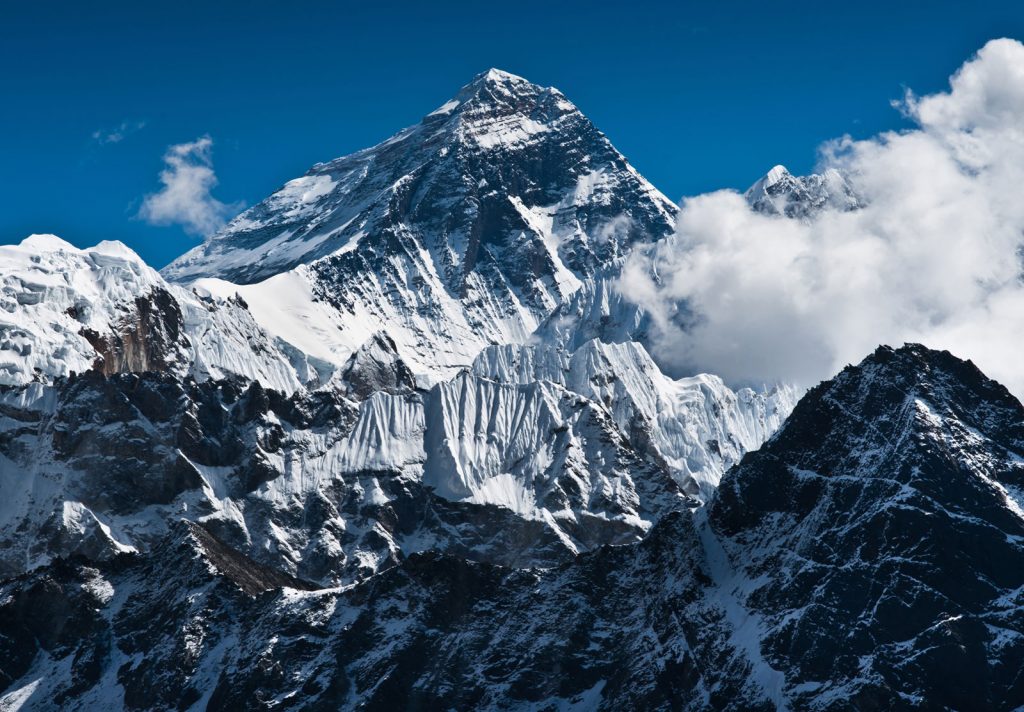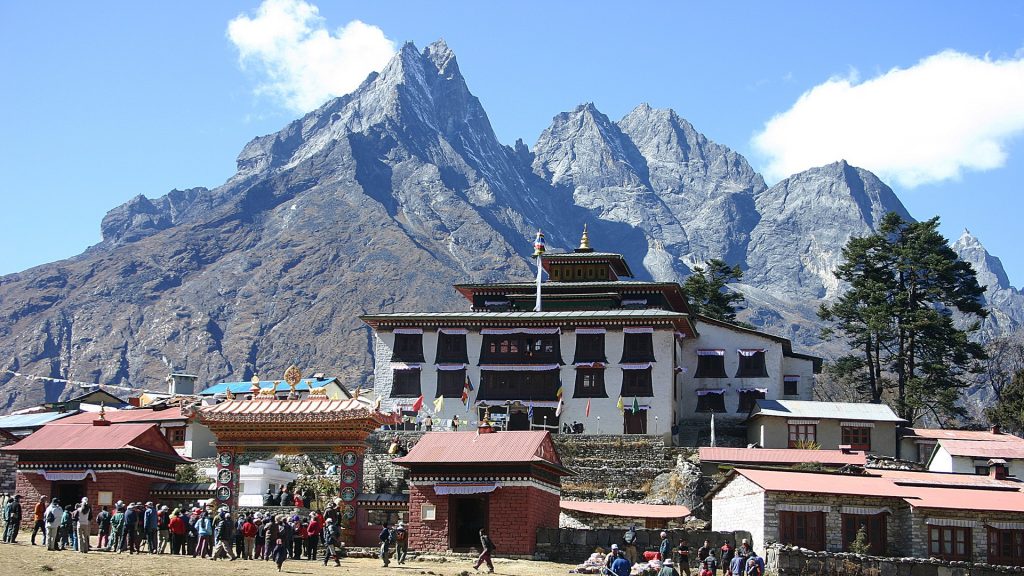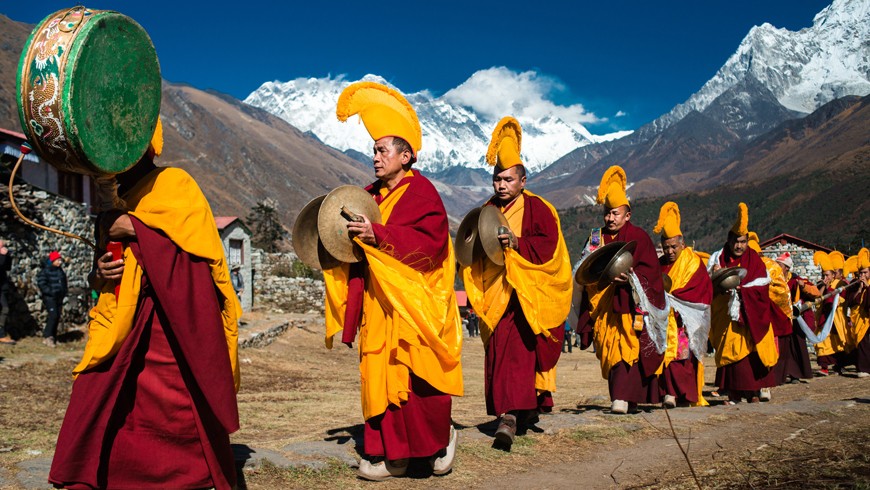Himalayan Mountain Range lies in the northern range of Nepal as it boasts of several top mountain peaks in the world including Mount Everest. Besides Everest, Nepal also boasts of seven other mountains which are above 8000 meters of altitude.
All of them including other mountain peaks like Mount Langtang, Mount Machhapuchhre, Mount Dhaulagiri, among others, form the popular Himalayan Mountain Range which has attracted attention of a lot of visiting tourists. Nepal, hence, can be called as the center of the Himalayan region. Most of the mountain peaks here in the country have formed the basis for several trekking routes and itineraries. Nepal is hence the major Himalayan region in the world which has captured the imagination of the entire world with its unmatched beauty. Trek to Nepal with the Trek to Himalayas is a wonderful opportunity to explore more about this beautiful country with the help of trekking and hiking.


The Great Himalayas form a climatic barrier between the monsoonal (wet-dry) Indian lowland plains and the Tibetan desert high plateau. The barren, uninhabitable highlands also are a major impediment to human travel; the turbulent rivers cannot be navigated, and their steep rocky banks make foot traffic difficult. The few passes are at elevations between 16,000 and 19,000 feet (5,000 and 6,000 meters). In the lower, forested Lesser Himalayas to the south, river valleys permit human habitation, grazing, and limited agriculture at an elevation of about 5,000 feet (1,500 meters). People of himalayan region are Tibetan Buddhist by religion. In this regard, we should know Buddhism from one general perspective and Tibetan Buddhism from another. Buddhism is a religion of renunciation, peace and non-violence which came out from four noble truths proclaimed by lord Buddha.
The most characteristic features of the Himalayas are their soaring heights, steep-sided jagged peaks, valley and alpine glaciers often of stupendous size, topography deeply cut by erosion, seemingly unfathomable river gorges, complex geologic structure, and series of elevational belts (or zones) that display different ecological associations of flora, fauna, and climate. Viewed from the south, the Himalayas appear as a gigantic crescent with the main axis rising above the snow line, where snowfields, alpine glaciers, and avalanches all feed lower-valley glaciers that in turn constitute the sources of most of the Himalayan rivers. The greater part of the Himalayas, however, lies below the snow line. The mountain-building process that created the range is still active. As the bedrock is lifted, considerable stream erosion and gigantic landslides occur.
Amongst the more popular trekking itineraries in Nepal, Mustang Trekking is one of the most popular and common trekking destinations amongst the visiting tourists as well as the domestic travelers. Mustang Trekking is a magnificent trekking route in the Western Nepal which takes the tourists to the hinterlands of the western region of Nepal and helps them explore about the place which was until few years secluded from the rest of the country, Previously, Mustang Trekking was part of the restricted trekking. But, now, it has been opened even for the international tourists as they can explore Mustang by taking some permit from the government of Nepal. Mustang Trekking and the Himalayan Mountains of Nepal have now become an integral part of Trekking in Nepal.
Every Trek to Nepal these days features Himalayan trekking itineraries including the likes of Mustang Trekking, Annapurna Circuit Trekking, Everest Base Camp Trekking, and many others. Manaslu Circuit Trek is yet another trekking itinerary which is quite popular amongst the prospective tourists. Moreover, it has attracted a lot of attention among the adventure seekers. Many come here just to hike and trek along the regions of the Himalayan mountains. Moreover, get the feel and experience the adventures of trekking in Nepal.
Nepal is hence the major Himalayan region in the world which has captured the imagination of the entire world with its unmatched beauty. Trek to Nepal with the Trek to Himalayas is a wonderful opportunity to explore more about this beautiful country with the help of trekking and hiking.
Tibetan Buddhism in the mountain is characterized by many tangible religious heritage which are also known as religious attitudes. In the mountains we can see the monasteries, one built outside the village and one inside the village. The monastery which is built outside the village is a theological institution and monastery inside the village. Similarly, it is like a temple where annual dance, rituals, ceremonies, etc. are performed. The monastery outside the village can be divided into two.


Monasteries should be understood as a spiritual heaven for withdrawal from sensual values or materialistic worlds. It is simultaneously a religious instrument for bringing Buddhist ideas and values. Moreover, to the lay people of this very temporal world. Monks in monasteries and nuns in nunneries are considered as integral part of Tibetan Buddhism. Reincarnation in Tibetan Buddhist communities is considered as one of the most important institutions. Lama who has spent more than 40 years in a monastery is believed to be reincarnated after 2 or three years of his demise.
There are a number of festivals celebrated in the Himalayan region. Dumji festival is considered to be most important because the monks perform to bring peace in their society. Religion plays an important role in bringing peace. In the mountains there will be an entrance gate in a village but not in all villages. But this should be the historically oldest village in the area. The purpose of the gate is that strangers will drive off evil spirits which they carry before entering the gate.


Once entered into the village we encounter a long freestanding stone wall with Tibetan Inscriptions. These walls should be kept on the right side. These types of walls will be built in the trails, between villages , etc. Whenever we encounter bridges, almost the bridges will comprise the colorful flags hanging across the river. People offer these flags for two purposes for the safety of their cattle and their own safety. In many places people will erect white plain flags which purpose is to follow prelemedian treatment.
Piling pebbles for longevity and constructing Stupa for religious merit are common. Colorful flag to please the mountain goddess before stepping in the mountain. Every house will have a bunch of flags on the roof tops for the purpose of bringing an auspicious mark to their family. In Manang, people erect a plain white flag on the top of the roof according to the number of households. One flag equals one family. After 50, no individual will be counted as a working person. They live their life in seclusion and are economically and socially retired. Similarly, with prayer beads in their hands for religious merit to attain emancipation.
Shopping is my option in contrast to Red Bull. Regardless…


Hundreds of years of preservation and perseverance, nourished and timely…
Among the many 12 years festivals Nepal has, Lha Phewa…